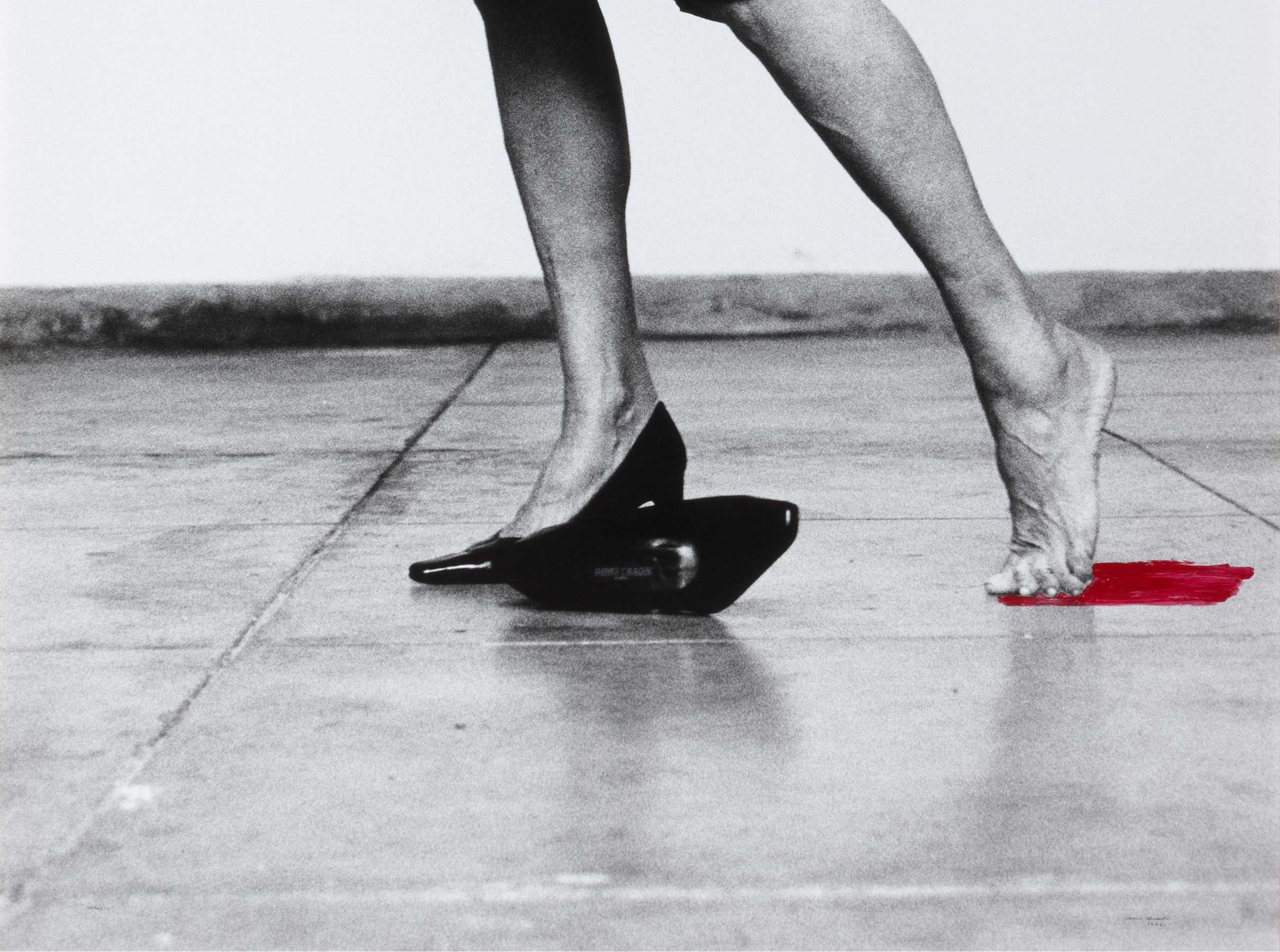Madrid, 2009
- 2009
- Digital print on paper
- 120 x 80 cm
- Edition 1/3
- Cat. F_138
- Acquired in 2012
Javier Campano has made a name for himself in the field of black-and-white street photography, where he brings a subjective and fragmentary perspective to both interiors and exteriors. Over the years he has built up a corpus of images that offer a kaleidoscopic portrait of Spain —and particularly Madrid— since the 1970s, although his subjects also include other places around the world. It is only in recent years, however, that his colour work has attracted attention. In 2017, he staged an exhibition at the Sala Canal de Isabel II entitled 'Campano en color Campano' ('Campano in colour'). The show shed new light on the protean figure of the photographer and marked the discovery of a previously under-rated facet of his work, which was in many cases, more daring and experimental.
The photograph here is representative of Campano's work. He employs an apparently intrusive gaze, focusing on the inconsequential, but with an interest in pictorial qualities, often in the interiors of bars and restaurants. This picture of the inside of a bar was taken in the Pacífico district in Madrid. The venue has no particular significance; it is simply a place where the photographer has taken a short break from the urban flânerie out of which so much of his work is born. And here, Campano found an unusual sort of 'found still life' that appears to breathe new life into the genre while at the same time subverting it. There is no sense of a constructed image, none of the mise-en-scène of the Baroque bodegones. Rather, the different elements have been brought together by chance, generating a strange image that combines the most traditional costumbrismo with a slightly surrealistic air.
At the heart of the picture is Campano's conviction that bars and restaurants hide stories that can only be told through objects. The items on the table seem somehow contradictory: judging from the fresh head on the beer, it has only just been poured and yet some of the olives have already been eaten. This moment in time plays out against a backdrop that would be no more than a small fragment in a portrait of Madrid were it not for one perplexing feature: a paper bag on the top shelf. It is this that caught the photographer's attention, giving him the punctum or key point for his shot. The landscape on the bag —late Impressionist or Fauvist in style— brings an alien touch to the setting. It is wedged between the ledge and a pilaste, that adds a touch of nobility to the décor. Positioned in such a way as to form a window, it awakens the fantasy of an Arcadian landscape amidst the urban environment that is Campano's natural milieu. The picture in question is a reproduction of the painting Beach. Evening Effect (1902) by Henri-Edmond Cross, now in the Carmen Thyssen Collection. The bag most probably comes from the gallery's gift shop. Thus, it shifts the focus of Campano's photograph to the themes of merchandising, consumerism and the 'pop' reproduction or conversion of images that the market exercises on works of art.This shift of meaning in this still life cum landscape is significant in the work of a photographer who has drawn his references — in his life and work— from the paintings and painters of his own and former generations.
The person eating the snack is absent from the photograph, in a link to the traditional lack of human presence in the still life genre, where people are replaced by objects in the discourse of painting. Some years before, Campano took a series of photographs on the architecture of the Banco de España, in which he also abjured any human presence, in an attempt to draw the viewer's gaze to the formal and symbolic nature of the interiors and give a voice instead to the architecture and what it had to "say" about the institution. Likewise, in this colour photo he lets the objects and images evoke (rather than narrate) something, arousing fantasies about their possible owner and the moments immediately before and after the photo was taken.
A self-taught photographer who learnt his trade by travelling and through time and effort, Javier Campano, turned professional at an early age and was introduced into the world of the image by photographers Luis Pérez Minguez and David Seaton. The former unleashed Campano’s passion for working with the human body and its relationship with nature, while the latter introduced him to the work of US authors and books that were a real discovery for Campano.
After the death of Franco and the in early days of a stage marked by cultural, social and political euphoria, Campano held his first solo show at Photocentro and published his first photographs in the Nueva Lente magazine, two of the most important platforms for the development of photography in Spain.
Known for his portraits of nearby locations in photos reflecting architectural and urban settings, and rarely depicting anything not in or within reach of a city, Campano could be said to be a street photographer ready to capture – mainly in black and white – the hidden face of an environment in which people appear only occasionally, as anonymous pedestrians or as part of the urban landscape.
Even though many of the works that form part of this collection are examples of Campano’s endeavours in black & white and colour photography, what stands out beyond his choice is the tendency to focus on both the geometric structure and the organisation of what surrounds him, and on shapes constructed with the help of light, fragments of urban reality, the play of casual lines, the informality of flaking, and so on. These are details that at first seem insignificant, but if we look carefully, they describe the human essence much better than many words.
Other works by Javier Campano

